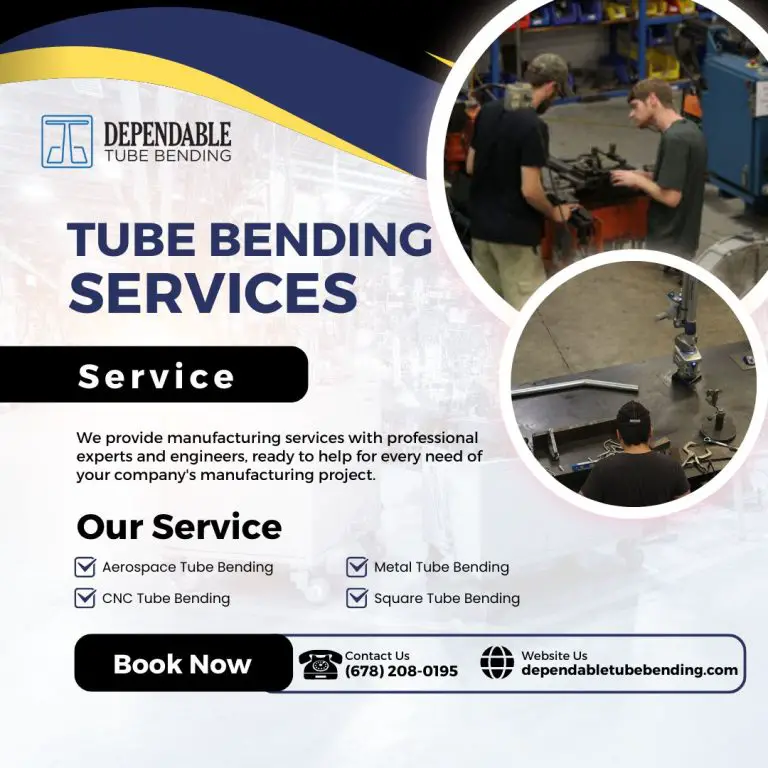In the realm of industrial manufacturing and engineering, the art of tube bending plays a pivotal role. From intricate architectural designs to complex machinery, tube bending services have become indispensable across various sectors. This comprehensive guide delves into the nuances of tube bending services, exploring its applications, techniques, and advancements reshaping the industry.
Understanding Tube Bending
- What is Tube Bending?
- Tube bending is a manufacturing process used to form pipes and tubing into specific shapes and configurations without compromising their structural integrity. This process is crucial for creating components that require precise dimensions and curvature.
- Applications of Tube Bending
- Tube bending finds applications in diverse industries such as automotive, aerospace, construction, furniture manufacturing, and more. It is employed in the production of exhaust systems, roll cages, handrails, furniture frames, and hydraulic systems, among others.
Techniques of Tube Bending
- Manual Tube Bending
- Traditional manual tube bending involves using hand tools such as tube benders and mandrels to shape tubes. While suitable for simple bends and low-volume production, it requires skilled operators and is time-consuming.
- CNC Tube Bending
- Computer Numerical Control (CNC) tube bending utilizes automated machinery controlled by computer programs to achieve precise bends according to specified parameters. This method is ideal for high-volume production and complex geometries, offering accuracy and repeatability.
Factors Influencing Tube Bending
- Material Selection
- The choice of material significantly impacts the tube bending process. Common materials include stainless steel, aluminum, copper, and carbon steel, each possessing unique properties affecting bendability, durability, and corrosion resistance.
- Tube Diameter and Wall Thickness
- Tube diameter and wall thickness determine the feasibility and complexity of bends. Thicker walls and larger diameters require greater force to bend and may necessitate specialized equipment.
- Bend Radius
- The bend radius refers to the curvature radius of the bent tube. It influences the bending process's complexity, with smaller bend radii requiring more precise machinery and techniques.
Advanced Technologies in Tube Bending
- 3D Tube Bending
- With advancements in CNC technology, 3D tube bending has become increasingly prevalent. This technique enables the creation of complex, multi-plane bends with high precision, opening new possibilities in product design and functionality.
- Hybrid Tube Bending
- Hybrid tube bending combines traditional tube bending methods with additive manufacturing or laser cutting processes. This hybrid approach allows for the integration of intricate features and customization, enhancing product performance and aesthetics.
Quality Assurance in Tube Bending
- Precision Measurement
- Accurate measurement techniques, such as coordinate measuring machines (CMM) and laser scanning, ensure compliance with dimensional specifications and tolerances.
- Material Inspection
- Rigorous material testing and inspection procedures, including visual inspection, ultrasonic testing, and hardness testing, verify material integrity and quality before and after the bending process.
Environmental Considerations
- Material Efficiency
- Efficient material utilization and waste reduction strategies, such as nesting software and optimized cutting patterns, minimize material waste and promote sustainability.
- Energy Efficiency
- Adoption of energy-efficient machinery and optimization of production processes reduce energy consumption and environmental impact, aligning with sustainable manufacturing practices.
Conclusion
In the realm of modern manufacturing, tube bending services represent a critical aspect of production processes across various industries. From manual techniques to advanced CNC technologies, the evolution of tube bending has revolutionized product design and manufacturing capabilities. By understanding the techniques, factors, and advancements in tube bending, manufacturers can leverage this versatile process to innovate and excel in an ever-evolving market landscape.
Source Url:- https://shorturl.at/aFUY5







